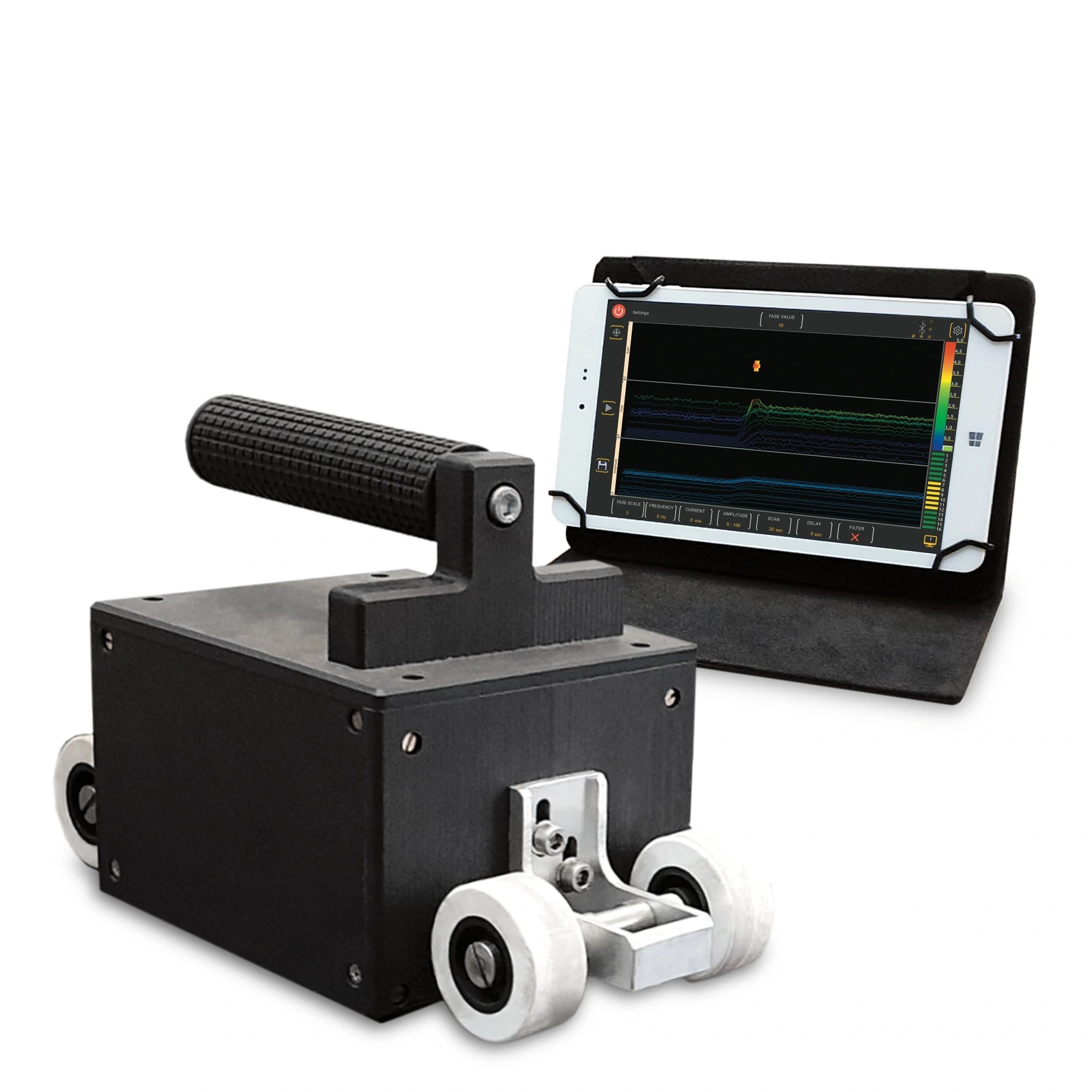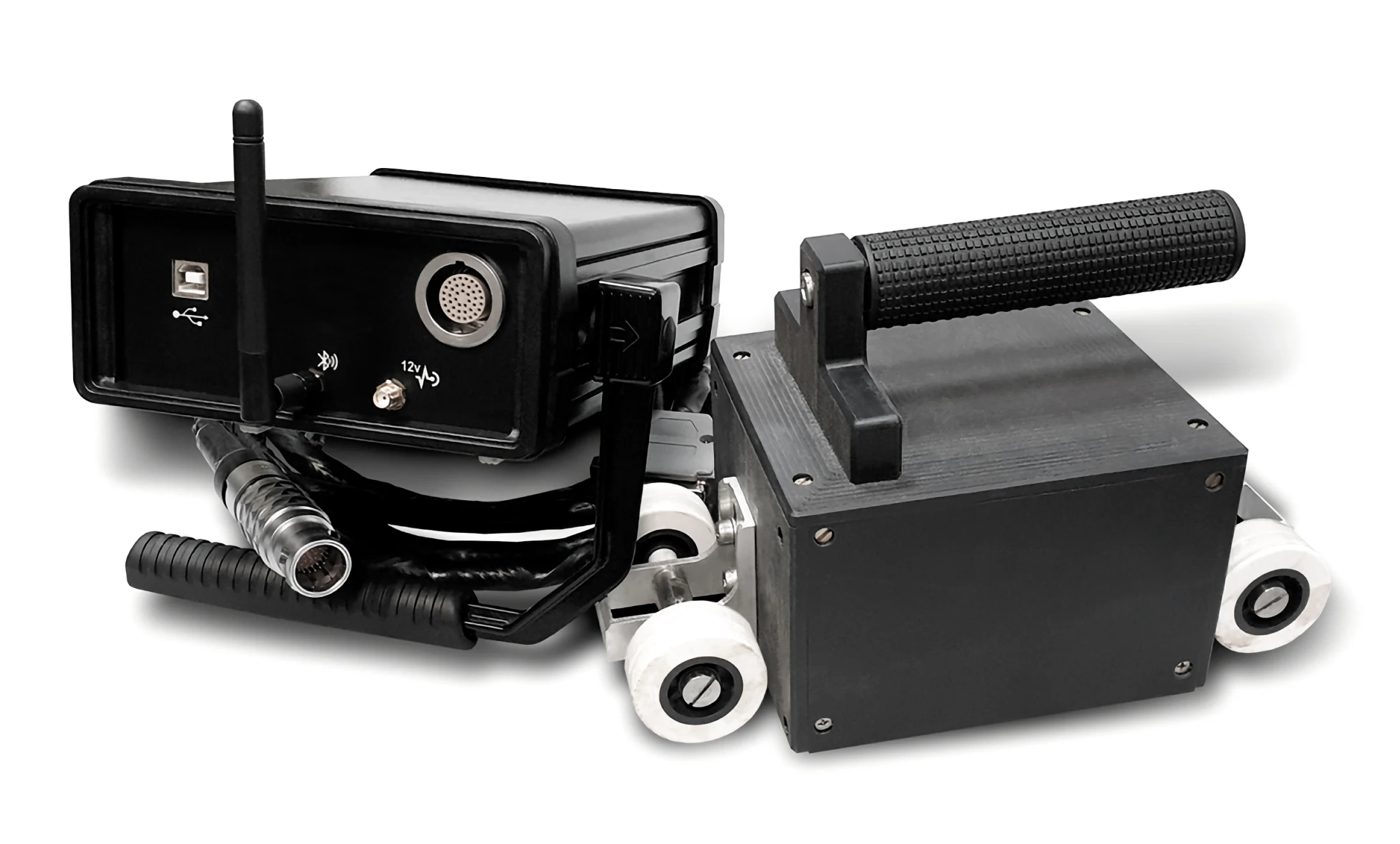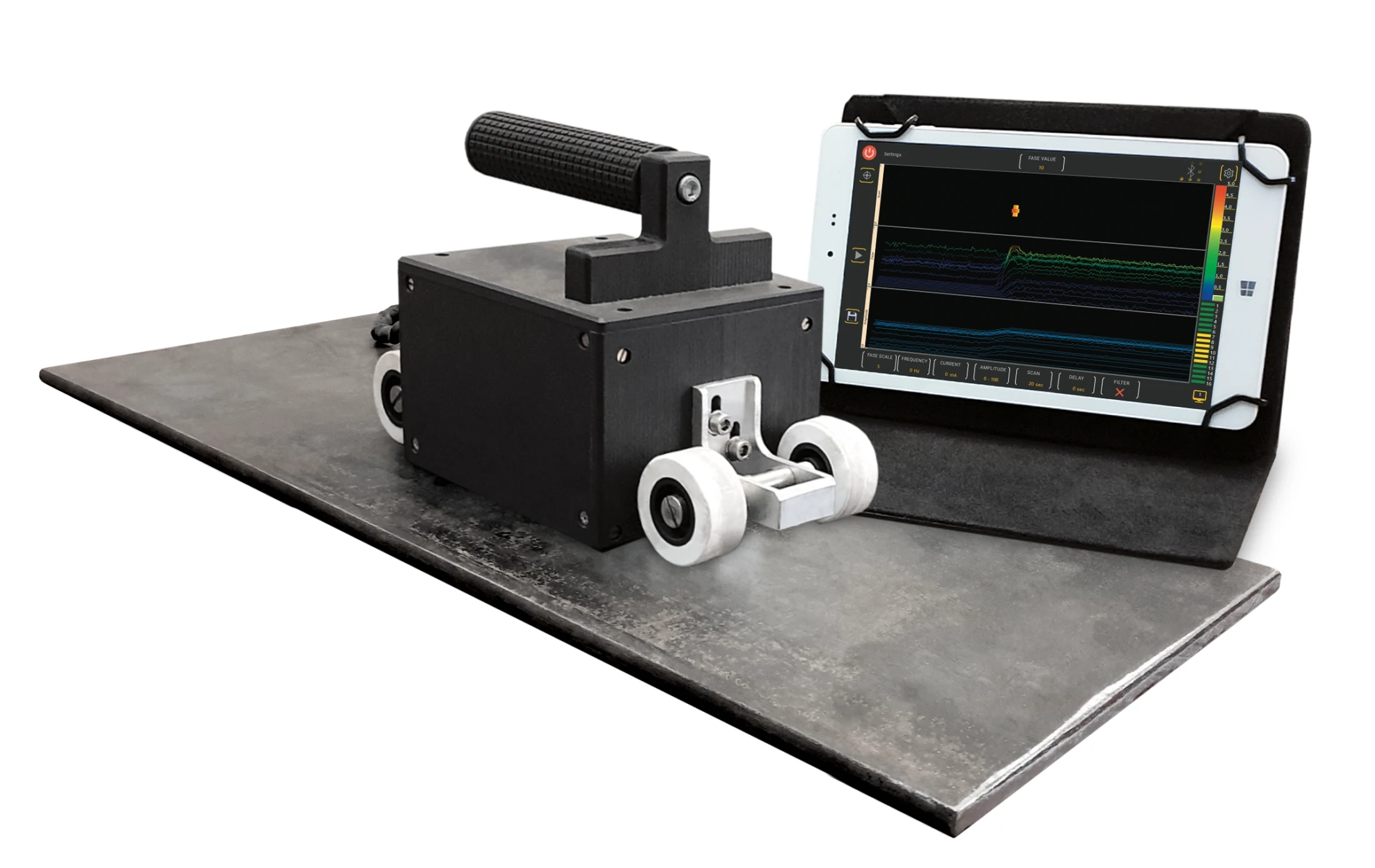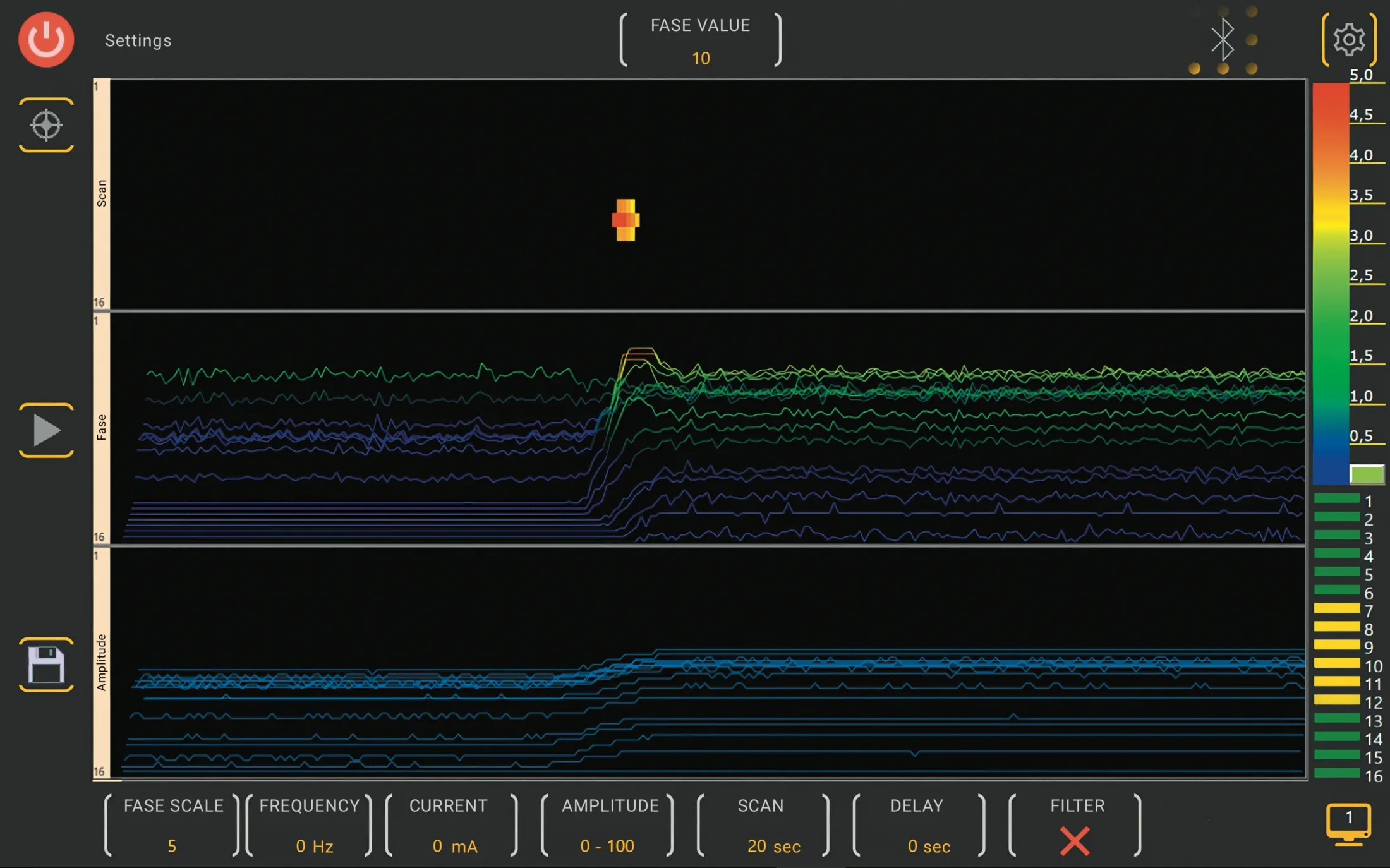The Corsair-16 is a low-frequency electromagnetic testing system designed for non-contact detection of local metal thinning in ferromagnetic items. It is used for inspecting a variety of metal surfaces such as storage tank bottoms, pipelines, and process furnaces.
Application
- Non-contact inspection of metallic items when access is available from one side.
- Detection of metal loss, wall thinning, and pitting corrosion.
- Suitable for inspecting:
- Boilers heating surfaces
- Process furnaces
- Bottoms and walls of storage tanks
- Pipelines and vessels
- No need for surface grinding or cleaning unless in-line inspection is required.
- Inspections unaffected by uniform rust, scale, or water inside non-ferrous vessels.
- Can differentiate between inner and outer defects in a single pass.
- No blind zones during testing.
- Absence of permanent magnets ensures long-term effectiveness.
- Wireless data transfer to laptops via Bluetooth.
- Wide frequency range: 1–30,000 Hz.
Features
- Multichannel electromagnetic device.
- Various transducer options for different applications:
- Flat working surface transducer for large storage tanks or pipelines.
- Concave surface transducer for pipeline inspection.
- In-line cylindrical transducers for internal inspections (e.g., heat exchangers).
- Eddy current transducers for crack detection in welds.
- Can be calibrated using test blocks for enhanced accuracy.
- 3D data visualization and quantitative evaluation of metal thinning and pitting corrosion.
- Flat working surface transducer: For large storage tanks or pipelines over 700 mm in diameter. Installed on a wheelbase for steady movement and correct gap setting.
- Concave surface transducers: Designed for fitting pipeline diameters. Installed on a wheelbase to maintain steady movement and correct gap between the transducer and object.
- In-line cylindrical transducers: Used for in-line inspection, such as pipes in heat exchangers.
- Eddy current transducers for balanced field: Used for crack detection in welds, weld proximity zones, and core metal parts.
- Operates with a frequency range from 1 Hz to 30,000 Hz.
- Low-frequency mode (5–30 Hz) for ferromagnetic materials.
- High-frequency mode (1,000–30,000 Hz) for non-ferromagnetic materials, including non-magnetic metals and alloys.
Operating principle
The Corsair-16 operates based on the interaction between alternating magnetic fields and metal. It works in two main modes:
- Low-frequency mode (5-30 Hz): Primarily for ferromagnetic materials, where the system detects changes in the magnetic field caused by metal thinning, corrosion, or other alterations. At low frequencies, eddy currents inside the metal are negligible, and the device detects areas where magnetic flux resistance alters due to pitting corrosion and thinning.
- High-frequency mode (1,000–30,000 Hz): For non-ferromagnetic materials, such as austenitic steel, and other non-ferromagnetic alloys. In this mode, the system operates as an eddy current device to detect cracks and other defects.
In essence, the system works by inducing a “magnetic swing” or oscillation in the metal under inspection. Variations in the amplitude and phase of the signal from the transducer indicate the presence of defects, such as thinning or corrosion. The system calculates the mass of the “magnetic pendulum” under the transducer’s sensitive element to provide data on defect size and type.
| Specification | Details |
| Minimum detectable defects | Wall thinning: 5% of initial thickness, Pitting: 3 mm dia, 30% depth. Read more in Operation manual. |
| Accuracy of defect size evaluation | Estimative, with defect depths of 20%, 50%, and 70% |
| Used frequencies | 5–30 Hz (ferromagnetic), 1,000–30,000 Hz (non-ferromagnetic) |
| Maximum speed of inspection | 0.3 m/s |
| Testing zone width | 100–165 mm (depends on transducer model) |
| Dimensions (manual 16-channel transducer) | Length х Width х Height: 230 х 119 х 140 mm |
| Mass of transducer | 16-channel flat transducer weights approx. 1,3 kg |
| Battery life | Up to 10 hours |
| Power consumption | 10 W |
| Operating temperature range | -30 to +50 °C |
| Number of channels | from 1 to 16 |
- Electronic data unit for data processing
- Multichannel electromagnetic transducer (specific type per technical enquiry)
- Laptop/Tablet/Industrial tablet (as per technical enquiry)
- Connecting cable for electronic unit and transducer
- AC adapter
- Accumulator
- Software (SD card)
- Carry and storage case




